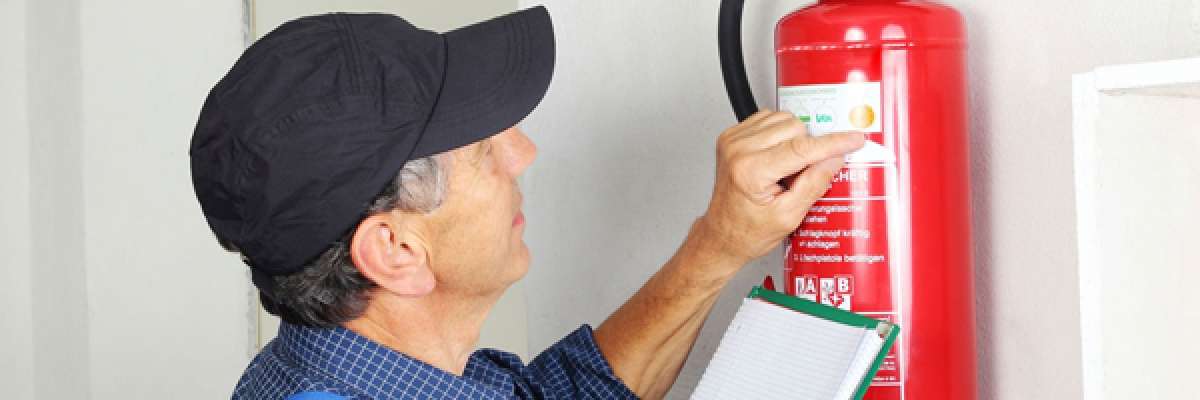Fire Prevention Techniques and Equipment
We are all aware of the dangers and potential hazards associated with our line of work, related to our industry.
One of the potential hazards that we need to be aware of, and must ensure that we are ready and competent to handle, at any time, is how to:
- Identify potential fire hazards
- Take preventative action to prevent a fire
- Raise the fire alarm in the event of an emergency
- Retain a fire
- Extinguish a fire
For us to be able to deal with any of the above aspects of fire fighting and control, we need to understand a few different things, such as.
- The chemistry of fire
- Methods of extinguishing a fire
- General sources of fire ignition
- Good housekeeping to prevent potential fires
- Classification of fires
- Fire extinguishing mediums
- Firefighter rules

Fire emergency plan
It’s nothing difficult, just a well thought out plan that takes into consideration the unique features of each building and its occupants. This plan should be in writing, and easily available to all employees. This includes those who work weekends and off-shifts. The plan should be kept current through periodic updating.
Fire emergency plan and procedure
If the alarm sounds, or a fire is suspected, call the Fire Department/brigade immediately. After calling the Fire Department, if you determine that there is no fire, but rather a malfunction of your equipment or a false alarm, call the fire brigade and relay this information.
Never wait to investigate the situation before notifying the Fire Department. Any delay will allow a fire to grow and further endanger the building occupants and property.
DO NOT silence the alarm until given permission to do so by Fire Department personnel or by the emergency operator.
DO NOT reset the alarm until the Fire Department arrives and has investigated the source of the alarm. All fire alarms are to be investigated by the Fire Department.
Remember the emergency number for the fire brigade! Memorise it. It’s important for employees calling the emergency number to be able to give the following information:
- Nature of the problem
- Location
- Address
- Nearest cross street
- Any specifics known
The caller should not hang up until told to do so by the emergency operator.
Close doors when exiting
By closing doors, you help limit the spread of smoke and fire throughout the building. Doors should be closed by employees as they leave, and by floor wardens assigned to check the floor during an alarm.
Never use elevators during a fire emergency.
The reason is three-fold:
- Elevators often fail during a fire, trapping occupants
- Elevator shafts may fill with smoke
- The elevator needs to be available for the use of arriving firefighters.
Occupants must exit by way of stairwells only. The employer must also make a plan how to deal with “disabled” employees.
Establish an employee meeting place
It is important to establish an employee meeting place so that all employees can be accounted for after a building evacuation. The meeting place needs to be away from the building, both so that the area is clear for arriving Fire Department personnel and also so that occupants are away from any glass or debris that may fall from the building.
If unable to leave the building, create an area of refuge.
Seal the room. Use wet cloth to stuff around cracks in doors and seal up vents to protect against smoke.
Do not break windows. Flames and smoke can come back in from the outside. If you need air, open the window a crack.
Stay low under smoke. The freshest air is near the floor. Keep a wet cloth over your nose and mouth, breath through your nose only.
Signal for help. Use the telephone, or hang something in the window.

Fire extinguisher
Fire Code requirements specify the size, number and location of fire extinguishers within your facility. These requirements help establish a protection level appropriate for the hazard class of your building.
NOTE: Make sure you know the types, sizes and maintenance requirements of your extinguishers, as well as the basics of extinguisher operation.
Extinguisher location and location signs
The following should also be addressed:
Locating Extinguishers: Each extinguisher shall be located in a conspicuous and readily accessible position. Extinguishers shall not be located in positions where access could present a hazard to the potential user. Where practicable, extinguishers shall be located along normal paths of travel and near exits.
Location signs: The extinguisher and fire point location signs shall have symbol, border and letters in white on a red field.
Sign size: The size of the sign shall be determined by:
- The location at which the sign shall be legible
- The distance at which the sign shall be legible
Sign location: A sign shall be provided above or adjacent to an extinguisher. A single sign may be employed to indicate multiple extinguishers in one location, even if different types are grouped together.
Signs shall be positioned so as to be clearly visible to persons approaching the extinguisher.
Mounting height: Signs shall be mounted not less than 2.0 m above floor level, or at a height that makes them most apparent to a person of average height and visual acuity approaching the extinguisher location.
Visibility: The extinguisher or extinguisher location sign, shall be clearly visible from a distance up to 20 m in all directions of approach.
Identification of key escape routes
In premises where members of the public or persons unfamiliar with layout of the premises are present there should be means available to identify the key escape routes. They could include schematic drawings supplemented with a satisfactory emergency escape signs.
Know your way out
An escape plan can help every employee to get out of a burning building. The idea is to get outside quickly and safely.
It's possible one way out could be blocked by fire or smoke, so you'll want to know where other ones are. You will want to know the best way to the stairwell or other emergency exits.
Communication and planning phase
Communicate the goal of the evacuation and emergency plan. This may include:
Involve the whole management team and employees in the process.
Explain your goal of protecting lives and property in the event of an emergency, and ask for their help in establishing and implementing your emergency action plan.
Tell the employees how important their commitment and support are to the plan’s success.
The best emergency action plans include employees in the planning process, specify what employees should do during an emergency, and ensure that employees receive proper training for emergencies.
When the employer includes all employees in the planning process, and encourage them to offer suggestions about potential hazards, worst-case scenarios, and proper emergency responses, surely this will add value to the whole emergency plan.
After the development of the plan, the employer should review it with his/her employees to make sure everyone knows what to do before, during and after an emergency.




Leave a comment